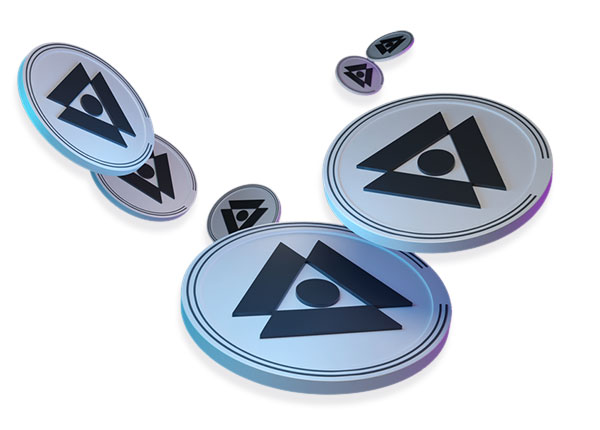Introduction
In 2015, the Ethereum network let developers create smart contracts on a decentralized network for the first time. As a result, many dApps began to work on the Ethereum blockchain, which increased its popularity and resulted in this network’s growth.
This growth resulted in using the network’s maximum capacity, which is 20 TPS, and the cost of network fees increased from USD0.01 per second to about USD50/S. Many feasible dApps have lost their financial attraction for users. Still, the Shardeum, the first EVM-based Lyer one blockchain designed to solve scalability trilemma with linear scaling and low gas fees forever, is the Shardeum.
Shardeum doesn’t sacrifice decentralization to have the highest throughput capacity among other EVM-based L1 blockchains.
What is Shardeum?
Shardeum is an EVM smart contract platform designed to scale linearly using dynamic state sharding. It means that by increasing the number of nodes in this network, its scalability will increase, and it can process more transactions per second. Shardeum brings low transaction fees along with true decentralization and security.
In other words, they say that as a layer1 blockchain, they have solved the blockchain trilemma.
The Shardeum network developer team expects to have billions of daily users and a large number of decentralized applications in its ecosystem. Solidity and Vyper are developer-friendly programming languages the Shardeum developer team used to write the smart contract of the ecosystem.

Nischal Shetty Founder of Shardeum
The Shardeum mechanism combines the Proof of Stake consensus with the Proof of Quorum consensus. The consensus algorithms secure the network through a trustless collection of votes and staking by validator nodes and cause low energy consumption.
Shardeum processes transactions in the order that they take place in blocks, which means that all users pay the same gas fee to process their transactions, and the network conditions are fair. The consensus mechanism of the Shardeum network accomplishes at the transaction level instead of at the block level, and each transaction can be processed simultaneously among the shards. The consensus at the level of transactions has several benefits, such as immediate finalization, low delay, and avoiding network congestion.
Shardeum Node(s)
Shardeum has three types of nodes:
- Validator
These nodes participate in the consensus process and validate transactions. They must stake some $SHM and get the reward for this contribution. These nodes do not store the entire network history, so they are lightweight. - Archive
The task of these nodes is to keep the entire history of transactions. These nodes receive the reward for participating in the network but may or may not have staked SHM. - Standby
These nodes are verifiers on standby in the network but do not participate in the consensus process. These nodes help to scale when network traffic increases. They may also need to stake SHM and earn a portion of the network reward.
Shardeum Coin (SHM)
The Shardeum network also has an ecosystem native token with the SHM symbol. Users use SHM for paying gas fees associated with executing transfer transactions and smart contract execution on the Shardeum network. The maximum number of SHM tokens is 508 million units.
Distribution
- 51% Community: Reward to nodes; validators, archive and standby servers
- 18% Sale: 3-month cliff, then two years linear vesting
- 15% Team: 3-month cliff, then two years linear vesting
- 11% Foundation: Unlocked at Token Generation Event (TGE)
- 5% Ecosystem: Unlocked at TGE
How to Participate in the Shardeum Airdrop?
According to assessments, Shardeum has yet to announce the Airdrop officially. What is known is that they have allocated 25.4 million SHM tokens for the ecosystem and Airdrop.
Step 1: Install the wallet and add the network
- Open MetaMask and click the list of networks at the top, then select “Add Network.”
- Input the endpoint information (copy from the table below).
- Endpoint Information Liberty 1.6
Field: Alphanet
Network Name: Shardeum Liberty 1.6
New RPC URL: https://liberty10.shardeum.org
Chain ID: 8080
Currency symbol (optional): SHM
Block Explorer URL (optional): https://explorer-liberty10.shardeum.or - Endpoint Information Liberty 2.0
Field: Alphanet
Network Name: Shardeum Liberty 2.0
New RPC URL: https://liberty20.shardeum.org
Chain ID: 8081
Currency symbol (optional): SHM
Block Explorer URL (optional): https://explorer-liberty20.shardeum.or - Click save.
Step2: Receiving The Test Token
After adding the Shardeum Liberty, you can claim 100 testnet SHM from the Shardeum Liberty faucet. We also can use it to deploy smart contracts and build dApps on Liberty. Visit the Shardeum Liberty faucet:
Liberty 1.6: https://faucet.liberty10.shardeum.org
Liberty 2.0: https://faucet.liberty20.shardeum.org
Step 3: Swap Tokens
After you have received Shardeum test tokens, go to its decentralized exchange at this link (https://dex.shardeumswap.finance/swap ). Then click on Connect Wallet and connect your Metamask wallet to this wallet and make a swap or provide liquidity with your test tokens
Conclusion
The developer team of Shardeum has written Smart contracts in developer-friendly languages such as Solidity and Vyper, allowing seamless EVM-based decentralized apps and Web 3.0 applications seamless deployment. Dynamic state sharding by adding more nodes to the network makes it possible for Shardeum to increase TPS (Transactions Per Second) with permanently low gas fees. Fast and affordable P2P transactions increase its global adoption.
Shardeum processes transactions following “first-come, first-serve” algorithms with no more gas rate for all transactions, which is reasonable and eliminates miner extractable value. The Consensus mechanism in the Shardeum ecosystem process occurs at the transaction level and parallelly across the network before being attached into blocks, resulting in a low latency or even immediate finalizing.
Achieve the high TPS because adding more nodes enables Shardeum to provide web3 and apps with linear scalability, decentralization in its absolute meaning, and reliable security, which allows developers to build smart contracts on a global scale.

